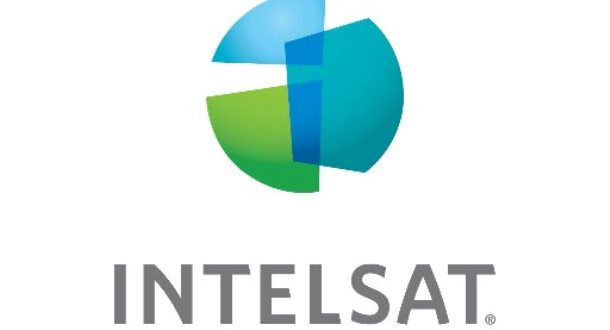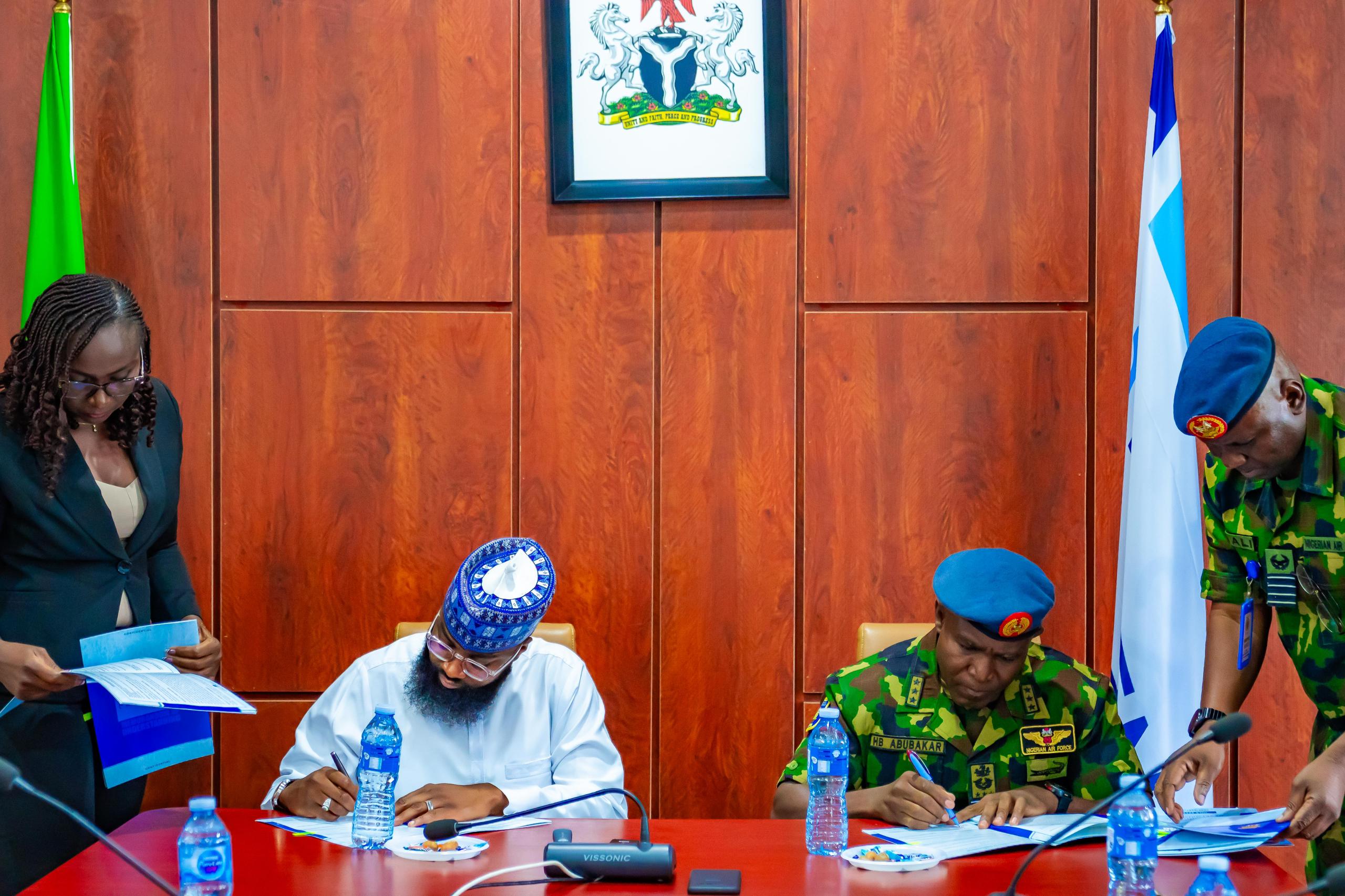Telecom
Intelsat Invests US$2bn into Unified Global 5G Network

Africa-focused satellite operator Intelsat is currently building a unified global 5G network the company says will support virtually any access technology, and enable the next generation of global mobility, IOT and 5G services.

The company believes while the continent relies heavily on 3G and 4G for connectivity, the role of 5G in the future African connectivity landscape is not in doubt, given the increased urgency for enhanced connectivity services for households and businesses.
Intelsat asserts that its hybrid, multi-orbit, software-defined 5G network will enable simple, seamless and secure coverage.
Hans Geldenhuys, Director, Africa Sales – Intelsat, explains: “Intelsat’s open architecture design which integrates multiple orbits supports virtually any access technology, while the multi-layer approach ensures no single point of failure in the system by creating redundancy – the assurance of continuous high level of service.
The construct of our network – cloud-based, fully virtualised, and software-defined – enables ground and space systems to interact seamlessly, no matter the orbit or band. Software-defined satellites provide ‘follow me’ capacity that dynamically allocates based on prevailing and predicted demand.
“The network enables frictionless connectivity with global roaming and easy integration with the growing 5G networks of the world, including common hardware platforms.”
To this end the company has confirmed that ten satellites, including two software-defined, are already in production and will complement its existing fleet of 52 satellites.
“… and we are also progressing in the design phase of all aspects of this network with our solutions partners,” Geldenhuys adds.
The company is mobilising this infrastructure to entrench its service and value proposition in the market – and more so because its leadership believes that 5G is inevitable and there is no doubt about its role in the future African connectivity landscape.
Geldenhuys continues, “5G is a catalyst for innovation and will give an opportunity to industry and service providers, communities, and individuals to advance their digital agendas towards economic growth, job creation and socio-economic development. However, it is likely that the mobile technology that will dominate in Africa for the foreseeable future will be 4G.”
Intelsat adds that according to the GSMA, 5G in Africa will only account for 3% for all connections in 2025, while 4G will continue to grow to 27%.
To make 5G successful, it will be essential for all stakeholders to put in place the necessary building blocks to maximise the opportunity that the technology can bring, the company says.
Satellite support for 5G
Intelsat is also confident of its strength in satellite infrastructure services and underlines the value of this technology in supporting 5G development on the continent – particularly in terms of extending connectivity to rural areas.
The company says for 5G networks, satellites will play an even more important role as operators will rely on their ubiquity and resiliency to ensure end-users have access to a broad range of applications, including in remote and rural areas – and even in airplanes or on ships.
Geldenhuys adds, “Satellites gives the opportunity to offer vastly enhanced and faster broadband connectivity with additional backhaul, creating redundancies, and providing remote and rural areas with greater connectivity.
Satellite will complement terrestrial networks in underserved areas for homes and businesses, or to enterprise sites as a backup. As you move to more rural and remote areas, only satellite communication has the potential to provide reliable coverage and sufficient data density.
“As the number, uses, and requirements of connectivity continue to evolve, so does the importance of extending the promise of 5G networks beyond the urban and densely networked communities.”
The company says that with the majority of the population on the continent living in rural areas where voice traffic still runs over 2G networks and devices on 2G mode, it will be difficult to skip 4G and migrate to 5G without, first, taking steps to migrate 2G/3G voice to VoLTE (Voice over LTE) over 4G networks.
In the short- to medium-term, governments and the mobile industry will, therefore, need to focus on efforts to increase 4G adoption among mobile users. This will involve strategies to make 4G devices more affordable and provide relevant digital content to drive demand for enhanced connectivity services, Intelsat states.
Geldenhuys adds, “5G will be a primary use case and provide significant opportunities to enterprises of all sizes, given the challenges around access, cost and reliability of existing connectivity services.
However, the cost of 5G devices will play a crucial role in 5G adoption rates for consumers in Africa, where smartphone affordability is a significant barrier to mobile access and ownership.
“We have long advocated for the integration of standards across the telecommunications ecosystem, which are now making it even easier to integrate satellites into new and innovative connectivity solutions.
“As mentioned, at Intelsat, we’re building an advanced network – aligned with these standards – that can support multiple access technologies, and ultimately make it easier for companies, governments, and communities around the world to connect and power their digital future.
“Our unparalleled unifying network will set the standard in 5G connectivity and uninterrupted global broadband service with unrivalled coverage, economics, and performance.”
The issue of spectrum
Intelsat suggests that for 5G to be fully realised, terrestrial telecommunications systems will not be enough.
“We will need to move to an integrated 5G ‘network of networks’ where satellites play an increasing role, alongside terrestrial networks and Intelsat has, for instance, been working on 3GPP standards.
When looking at spectrum bands, a balanced way of thinking is needed to cater for wider geographic areas and ultra-high-speed capacity with low latencies. Mid-band spectrum (i.e., C band) is still required by satellite services as a robust transmission for Africa and there is a real need to protect these services and enable regulatory certainty for their future,” Geldenhuys adds.
The company believes that regulators and policymakers have an important role to ensure that the mobile industry and 5G are major catalysts in speeding up the digitalisation of the continent. But it must be done in a balanced way which does not impact other services such as FSS. So, adding more spectrum is not the answer to the coverage challenges.
“In order to bridge the digital divide, regulators need to cater for a balanced approach. One that takes care of all technologies and allows them to grow to meet the 21st century connection challenge for Africa,” says Geldenhuys.
The company suggests that more needs to be done to raise end user awareness of the breadth of 5G use cases and areas of application. To accelerate the adoption, end-users must see the value of the technology.
Telecom
NASENI, Nigerian Air Force Renew Strategic Partnership to Drive Indigenous Defense Technologies

National Agency for Science and Engineering Infrastructure (NASENI) and the Nigerian Air Force (NAF) have renewed their Memorandum of Understanding (MoU) to deepen collaboration on indigenous technology development, particularly in defense, aerospace, and infrastructure.

The event, which took place at NASENI Headquarters in Idu Industrial Layout, Abuja on 25th July 2025, was marked by a high-level visit led by the Chief of Air staff, Air Marshal Hasan Bala Abubakar alongside senior officers from the Nigerian Airforce. The team was received by the Executive Vice Chairman/CEO of NASENI, Mr. Khalil Suleiman Halilu, and his management team.
In his keynote remarks, the Air Marshal commended NASENI for its transformative work under Mr. Halilu’s leadership, particularly in reverse engineering, local manufacturing of engineering components, and consistent support to the Nigerian Air Force.
He specifically acknowledged NASENI’s contribution to the development of the C5 Rocket Project, highlighting the agency’s role in producing the rocket bodies and structural components, and in conducting precision material analysis.
He also applauded the establishment of the NASENI Northwest Technology Innovation Hub located at the Air Force Institute of Technology in Kaduna, describing it as a landmark project made possible through land support by NAF.
The Air Marshal noted that, Airforce is seeking greater inclusion in the governance and execution of the hub, given its role as host and technical contributor, also proposing that NASENI formally co-own the C5 Rocket Project, while urging the agency to continue leading the production of rocket body structures while exploring cost optimizations.
Furthermore, he invited NASENI to enroll its young researchers in newly developed R&D training modules at its Research and Development Institute. The request extends to a new area of partnership — capacity building in Computer Numerical Control (CNC) machining for Air Force technical personnel at NASENI’s Centre of Excellence.
Responding, NASENI EVC/CEO Mr. Khalil Suleman Halilu reaffirmed the agency’s commitment to the long-standing collaboration with the Air Force, describing it as both professional and personal.
“Our partnership with the Nigerian Air Force is one of our smoothest and most productive,” he said. “We’ve achieved so much together — from reverse-engineering projects to shared innovation hubs — and we are just getting started.”
Mr. Halilu showcased NASENI’s progress in Unmanned Aerial Vehicle (UAV) development, drone pilot training, asset recovery programs, and its world-class CNC machining infrastructure, inviting the Air Force to take advantage of all available resources and facilities.
He emphasized NASENI’s culture of private sector collaboration as a model for cost-effective implementation while maintaining inclusive access for public institutions such as the Air Force.
Highlighting the signing of the new MoU, Mr. Halilu said the updated agreement is designed to be more structured, result-driven, and aligned with President Bola Ahmed Tinubu’s Renewed Hope Agenda. It focuses on joint R&D, local manufacturing of aerospace and defense components, human capital development, and knowledge exchange.
“This partnership goes beyond paperwork,” Mr. Halilu noted. “It’s about building the future of Nigeria’s defense and innovation ecosystem together.”
The formal signing of the renewed MoU marked a new chapter in the strategic relationship between both institutions, setting the stage for the activation of joint action plans on the C5 Rocket Project, CNC training, defense manufacturing, and other innovation-driven initiatives.
Telecom
How Zabira is Empowering the Next Generation of Entrepreneurs

Financial independence is no longer a distant dream but a daily reality, especially for young entrepreneurs cashing out weekly through innovative platforms like Zabira.

From trading gift cards to paying bills with crypto-converted naira, Zabira is proving to be more than just a fintech app; it’s a complete digital marketplace designed to fuel the ambitions of the next generation of hustlers.
With users reportedly earning up to ₦150,000 weekly from ongoing campaigns, Zabira has become a go-to platform for side income and full-time digital entrepreneurship.
Its frequent cashback campaigns reward both new and existing users, allowing them to earn 2% cashback on their first crypto trade and 3% on their first gift card trade, a simple but powerful incentive that reduces entry barriers for young people stepping into digital finance.
But Zabira isn’t just about trading; it’s about everyday life. In a move to deepen its utility and promote seamless living, the platform has expanded its bill payment business unit. Users can now pay for airtime, data, electricity (PHCN), TV subscriptions, and even fund wallets for platforms like Bet9ja, all within the Zabira App.
Zabira allows users to make utility and other payments directly using crypto. For added flexibility, users can also instantly convert their crypto to naira, removing any limitations and ensuring seamless transactions without bank delays or downtime.
This subtle integration of crypto into daily transactions is a major leap forward in digital financial inclusion. It not only helps normalise the use of digital assets but also provides practical avenues for users to derive real-world value from their crypto holdings.
Zabira also understands the frustrations of online subscriptions, especially when traditional bank cards fail. Through its robust gift card marketplace, users can buy and use cards for platforms like Netflix, Spotify, Google Play, Apple, Amazon, and more.
These cards offer a reliable alternative for accessing services that are increasingly essential for both work and leisure and are especially helpful for digital creatives, remote workers, and students.
Beyond utility, the platform keeps the entrepreneurial spirit alive with bonus campaigns on first-time gift card trades, creating more reasons for users to engage and earn. With every trade, Zabira positions itself not just as a service provider but as a digital enabler supporting users on their financial journey.
In a country where access to financial tools can often feel like a privilege, Zabira is leveling the playing field. Whether you’re a student looking to subscribe to an online course, a freelancer paying for tools, or a small business owner funding your daily operations, Zabira is building the infrastructure that turns these goals into everyday wins.
To get started using Zabira, users can download the app on Android and iOS devices.
Telecom
Driving Digital Inclusion: Anambra’s Mobile Tech Hub Brings Free WiFi to the People

The Geeks & Founders Alliance for Soludo (GEFAS) has taken another bold step in supporting Governor Charles Chukwuma Soludo’s vision of a smart, connected Anambra with the official launch of its Mobile Tech Hub- a custom-built bus bringing free WiFi directly to the people.

Fully equipped with high-speed internet, voice and data services, and backup power, the GEFAS Mobile Tech Hub can connect up to 3,000 people at rallies, campaign grounds, and public spaces: expanding the Solution WiFi initiative already live at over 26 locations across Anambra.
The Deputy Governor of Anambra State, Dr. Onyekachukwu Ibezim, flagged off the Mobile Tech Hub at a brief ceremony held on Thursday, 24th July 2025, at the Tower of Light, Emeka Anyaoku Boulevard, Awka.
He was joined by the Secretary to the State Government, Prof. Solo Chukwulobelu; the Deputy Chief of Staff/Chief Protocol to the Governor, Chief Chinedu Nwoye; other senior government officials; the media; and the GEFAS community.
Dr. Ibezim, visibly excited as he inspected the hub’s features, described it as an initiative perfectly aligned with what the Governor is doing in the state.
“We don’t expect anything less from Agbata, who is a guru in this field: exactly why the Governor puts square pegs in square holes,” he said, pointing to the sophistication of the project and the Governor’s deliberate choices.
“I hear wherever this vehicle parks, people can connect freely, in line with our mantra of making Anambra a place to live, invest, work, relax, and enjoy
“I thank Agbata for this great feat and assure our government’s support to make Anambra the smart mega city we all desire
He further emphasized that this will not be a one-off.
“Mr. Governor is also working to make this permanent. We are not just going to leave you with one vehicle. So I encourage everyone: wherever you see this bus parked, connect to the free WiFi and get your job done.” he concluded.
Earlier in his remarks, Chukwuemeka Fred Agbata, CFA, GEFAS Convener and MD/CEO of the Anambra State ICT Agency, said:
“We are here to celebrate innovation made possible by Mr. Governor’s forward-thinking policies, like waiving Right of Way (RoW) charges, which opened up fibre optic expansion and connectivity across Anambra.
“Today, various public places, student lodges, and even four higher institutions in the state already enjoy free WiFi, just as Governor Soludo promised in his People’s Manifesto.
“Now, with this Mobile Tech Hub, wherever the Governor goes during the campaign period, people can enjoy free connectivity and high-speed internet.
“All over the world, we know that when broadband expands, the economy grows.
He added, “Data is expensive these days, so this bus will bring relief to Ndi Anambra.
“Wherever you see it passing through your neighborhood, you can hop online for free- maybe download a movie, a song, or do whatever you like.
It’s a practical solution that the Solution Government is delivering. So, vote Governor Soludo, and let the Solution continue” Agbata concluded.
The bus is set to hit the road in the coming days, following Governor Soludo to campaign grounds and reaching far more neighborhoods in earnest.
With this milestone, GEFAS reaffirms its commitment to helping Anambra become the smart, connected, and prosperous state that every citizen can proudly call home.

 General News3 days ago
General News3 days agoFG Plans N50m STEEM Grant to Support Student Innovation in August

 E-Business3 days ago
E-Business3 days agoTranscorp Hotels Delivers Stellar H1 Results, Declares Over ₦1Bn Dividend

 E-Financial3 days ago
E-Financial3 days agoCardoso, CBN Boss Risks Arrest over Alleged N5.2 Trillion Unremitted Funds

 Telecom3 days ago
Telecom3 days agoMTN Media Innovation Programme Fellows Gain Insight into Nigeria’s Connectivity Backbone

 E-Financial3 days ago
E-Financial3 days agoNIBBS: Banks Close 29.4m Accounts, Dormant Accounts Hit 33.39m

 General News3 days ago
General News3 days agoExperts Champion Sustainability at Lagos Green Economy Forum

 Telecom3 days ago
Telecom3 days agoDriving Digital Inclusion: Anambra’s Mobile Tech Hub Brings Free WiFi to the People

 Broadcasting3 days ago
Broadcasting3 days agoNDPC Hides MultiChoice Privacy Violation Details Despite FOI Request- FIJ



























